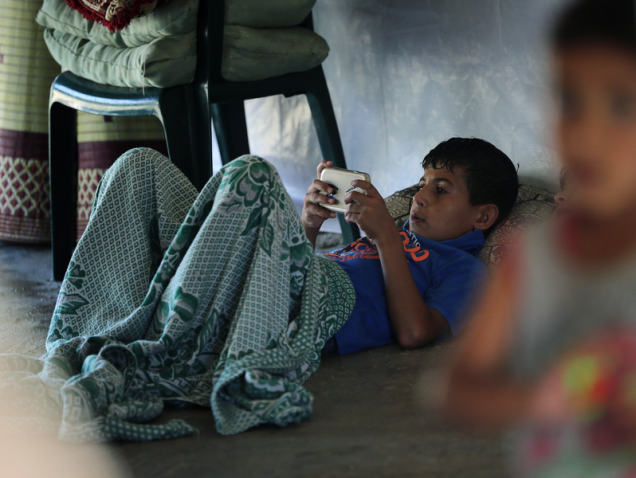In many ways it’s difficult to identify with the refugees flooding into Europe from Syria and other warzones. Most of us have never had to flee from our homes with little more than the clothes on our backs. But there’s one thing we have in common: our reliance on smartphones.
As you’re no doubt aware, the sight of “migrants” peering at their phones on European beaches and railway station concourses has outraged some observers, who’ve taken it as a sign that these people are secretly wealthy and therefore don’t need our help.
But many Syrian refugees are simply ordinary people – educated, middle class, with a talent and a trade. In other words, people like us. If our homes had been destroyed and we were forced to run, would we leave our phones behind? No way.
Journalist Nicole Trian, who works for France24 in Paris, has just returned from Lesbos in Greece – the destination of many Syrian refugees arriving by sea from Turkey. She told me: “Their phones are literally a lifeline, almost as critical as food and water. This is how they communicate with people back home.”
Nicole saw refugees working their phones almost as soon as they had scrambled ashore, trying to locate themselves or inform their families that they had made it safely across. “The next thing they do is buy a SIM card or find somewhere to charge their phone.”
Brand addict that I am (and I accept that this may be in poor taste), I was keen to find out what apps the refugees were using, and on which phones. The first question was the easiest to answer: several articles suggested that they use WhatsApp to communicate, Google Maps and GPS to navigate and Facebook to stay in touch with their community. Online translation tools and currency converters are also useful.
There are even reports that they have documented their journeys on Instagram – although one account, by a young Senegalese man named Abdou Diouf, turned out to be a fake, made by a Spanish filmmaker to draw attention to the “frivolity” of our social media activity in the face of such misery.
Social media sites may have benefited people traffickers – who use Facebook pages with names like “Trafficking to Europe” to target migrants – but, conversely, they have also helped refugees attempt arduous journeys without dubious outside assistance.
Aid organisations have also been using social media to help the migrants. A group of big-hearted young Germans has set up Refugees Welcome, a sort of Airbnb for refugees. People who are willing to give a migrant a home place details of their accommodation on the site, which is operational in Germany and Austria and is looking to expand to other countries.
So what phones are the migrants carrying? On the “What’s In My Bag” photo project from the International Rescue Committee (and published on Medium.com), I identified at least one Samsung Galaxy. On a news site photo, featuring dozens of smartphones plugged into a communal socket, I spotted an Iphone, a couple of Samsung devices and what looked like a Nokia.
Nokia actually makes the world’s cheapest smartphone. In January, Microsoft launched the Nokia 215 – which costs less than US$20, or €17.50 – in the Middle East, Africa, Asia and Europe. The company called it “the most affordable internet-ready phone”. Its battery lasts 29 days on standby.
On Amazon.com I found a clutch of “unlocked cell phones” for under US$100, including the Nokia Lumia 635, the Samsung Galaxy Star Plus and the Motorola Moto E. Scanning tech sites, I learned that Alcatel, LG and a couple of Chinese brands – HTC and Cubot – all make budget smartphones. This makes commercial sense, in the same way that detergent brands sell budget-sized sachets in emerging markets.
Since when, in any case, have mobile phones been the domain of the rich? Not since the early 1990s, at least. I’ve lived in quite a few downmarket neighbourhoods over the years, and one thing they all had in common were tacky yet cheerful stores offering to fix, unblock or sell cheap phones.
Smartphones are like cars. When you travel in developing nations, you see a few wealthy folk in shiny new 4x4s. But mostly you see ordinary people driving second hand models; or rattling around on mopeds. When something is essential – like transport, or communication – people always find a way.




